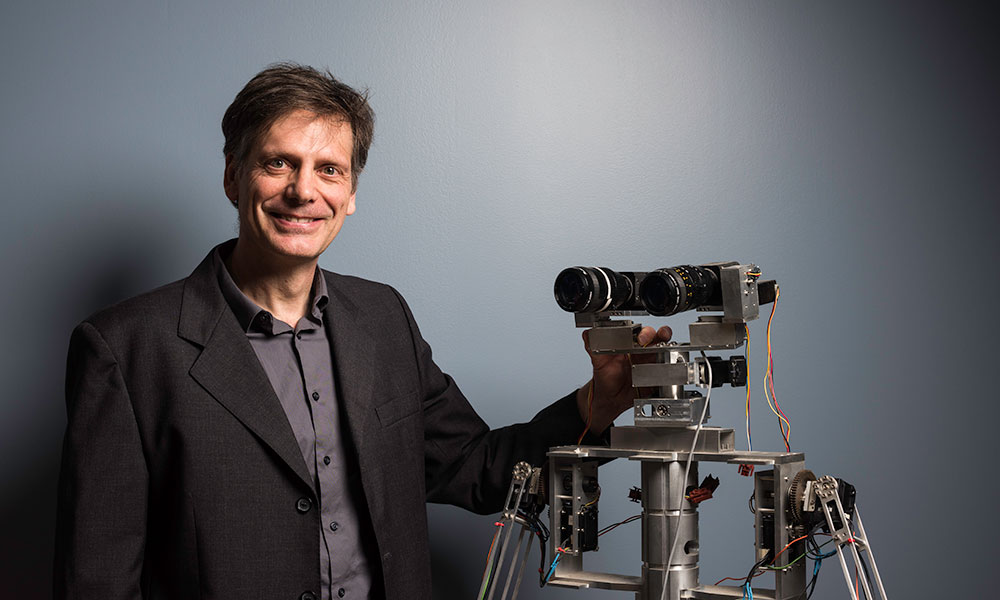
Small, involuntary eye movements help us see a stable world
“Fixational” eye movements play a larger role in vision than previously thought, according to Rochester researchers.

Brief period of ‘blindness’ is essential for vision
Rochester vision scientists uncover new information about the role of tiny “fixational” eye movements in enabling us to see clearly.

Small eye movements are critical for 20/20 vision
When a patient fails an eye test, it’s not just structural defects in the eye that are to blame. New Rochester research show that small eye movements humans aren’t even aware of making play a large role in humans’ ability to see letters, numbers, and objects from a distance.

New training in AR/VR tech gives Rochester doctoral students an edge
A $1.5 million grant from the National Science Foundation will establish a structured, well-rounded training program for University scholars applying augmented and virtual reality in health, education, design, and other fields.

Microscopic eye movements affect how we see contrast
While the world may appear stable, our eyes are always jittering. Rochester research is showing how these eye movements, once thought to be inconsequential, are critical to our visual system.

A professor and his robot study how we see
Meet Michele Rucci, a new professor in the University’s brain and cognitive sciences department, and his robot “Mr. T.” Rucci and his robot are using eye-tracking tools and virtual reality to replicate the small eye movements experienced by humans.
